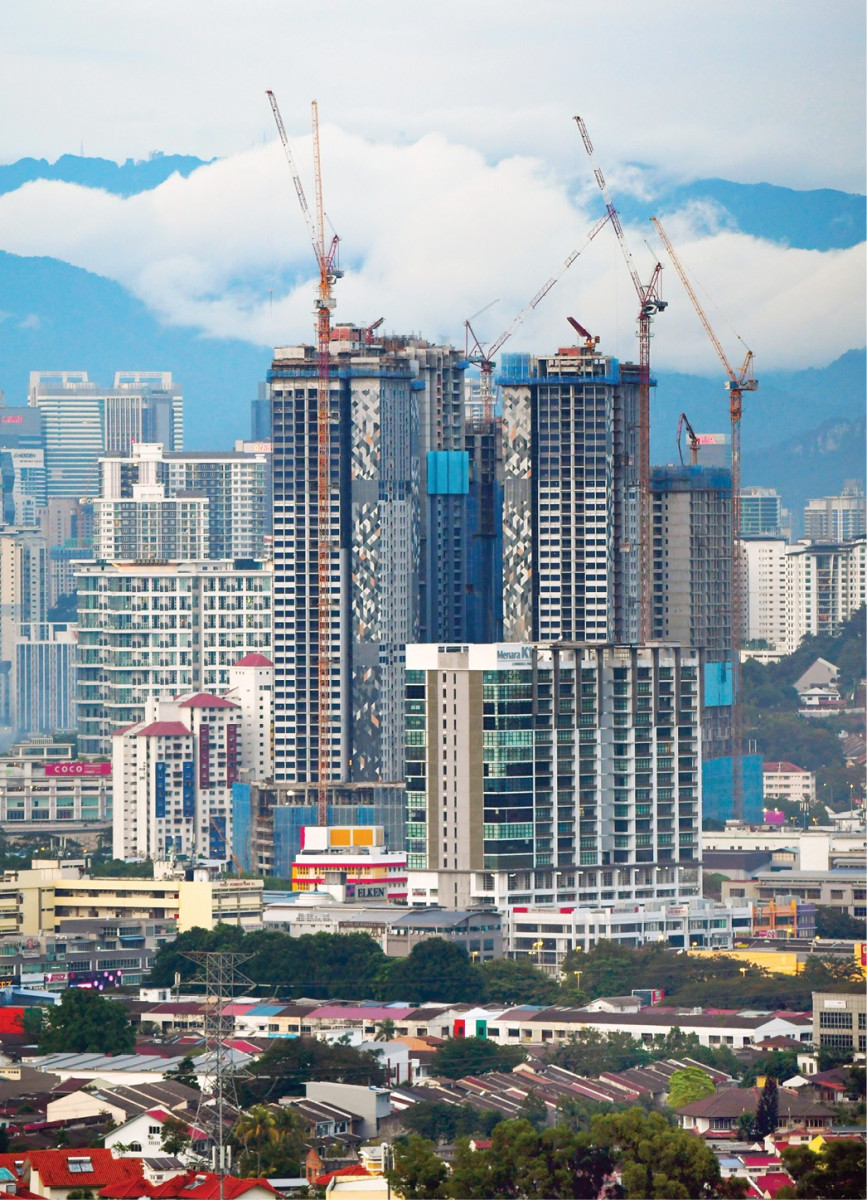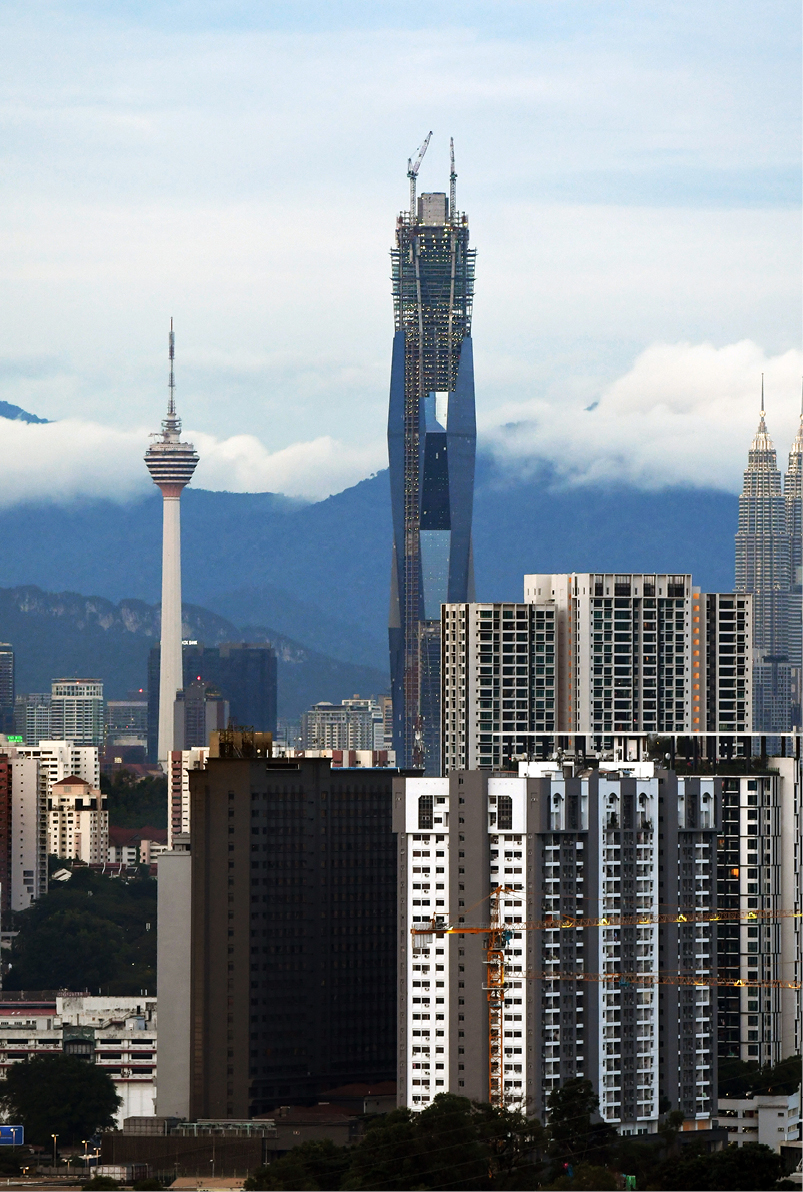
As the Covid-19 pandemic continues to ravage Malaysia, the government took to imposing the Movement Control Order (MCO) 2.0 to curb the deadly coronavirus nationwide, except for Sarawak, until Feb 4, 2021.
The first announcement came on Jan 11, 2021, with six states – Penang, Selangor, Melaka, Johor, Sabah, Kelantan and three Federal Territories (Kuala Lumpur, Putrajaya and Labuan) placed under MCO from Jan 13 to Jan 26. It was then extended to Feb 4.
As the number of cases continued to rise, the next day saw Perak, Kedah, Perlis, the whole of Negeri Sembilan, Pahang and Terengganu being placed under MCO from Jan 22 to Feb 4.
To recap, Malaysia was first put under a lockdown on March 18, 2020. As the first wave of the virus spread was gradually pushed back, restrictions were correspondingly eased, and the economy saw hopeful recoveries.
However, subsequent outbreaks, worse than the first, have struck the nation, and for many sectors, whatever recoveries they made are now being erased.
The building and development industry is among the many hard-hit sectors, but gritting their teeth through it, its key stakeholders concur MCO 2.0 is necessary.
This was voiced by Rehda Malaysia president Datuk Soam Heng Choon, Master Builders Association Malaysia (MBAM) deputy president Oliver Wee Hiang Chyn and Malaysian Institute of Architects (PAM) president Datuk Ezumi Harzani Ismail, in the EdgeProp Malaysia Virtual Fireside Chat held on Jan 19. The Facebook Live session entitled “Impact of MCO 2.0 on the Malaysian Property Sector” discussed various issues that resonate not only with the industry players, but property investors too.
The fireside chat is moderated by EdgeProp.my editor-in-chief and managing director Au Foong Yee.
Will property prices fall?
One of the issues raised by many viewers was whether property prices would go down in the light of current uncertainties.
On this, Soam said the current prices have “hit rock bottom”. He does not foresee prices dipping further.
“The selling price now is the result of the input cost made up of the spiking building material price and additional cost incurred due to the pandemic.
All developers want a quick sale so that they can pay the contractors and so on to move the business,” he explained.
Nevertheless, he also highlighted that developers have gone back to the drawing board as far as launch projects and pricing are concerned as they want to minimise more losses or additional holding cost at this point in time.
“With the Malaysia My Second Home (MM2H) programme put on hold and MCO reinstated, the developers have no other choice but to price the new projects at a very competitive price to survive the pandemic,” he noted.
MM2H is a government programme aimed at promoting Malaysia as an ideal place to stay and invest in. Interested foreign applicants who fulfil the criteria will be offered 10-year renewable visas. The programme raked in RM40.6 billion in total from its introduction in 2002 until 2018, from 21,841 approvals. However, the scheme was temporarily frozen to enable the Ministry of Tourism, Arts and Culture to conduct a comprehensive study and reevaluation.
Ezumi concurred that current property prices are affordable as the pandemic has already adjusted the market.
“Whatever that is overpriced will not work anymore. The pandemic has adjusted the market and what we have now in the market is affordable and matches the income level of the local buyers,” he shared.
Wee stressed that the property price may not reduce to the level which the market wishes for, as the indirect construction input cost has increased, such as temporary shutdown of construction sites, lack of skilled workers and higher standard of workers’ living and working facilities.
“The selling price is a reflection of the additional construction cost due to the pandemic,” Wee said.
As for secondary market properties, Soam noted it is not surprising the traditional property hot spots remain popular even during an economic downturn. Land scarcity is one of the reasons that supports the price and popularity – for instance, demand for landed residential properties near the Mid Valley (Kuala Lumpur) area will remain intact as there isn’t any suitable land left for development, he explained.
“The existing landed house prices will be holding up firmly as everyone knows it is a good location and you will never go wrong buying there, so don’t expect it to be cheap during a downturn.

“If there is a sudden price drop in a property hot spot, it will mean something is wrong with the country’s economy, which we don’t want to see happen,” Soam noted.
Some 180 industries dependent on property sector
Unlike the first MCO in March last year which caught all Malaysians off-guard and put a halt on almost all business sectors, Soam noted more business sectors, including construction, are allowed to operate in MCO 2.0. This has alleviated the economic impact on construction and property development industries.
“However, since the MCO 2.0 started, there have still been many discussions going on and many of us are still wondering where we are heading to. For example, we need to make sure others in the property industry supply chain are also allowed to operate or the entire development progress will not be seamless… There are areas of doubt that need to be clarified,” Soam shared.
He highlighted there are more than 180 industries related to or even dependent on the property industry. “If the property industry goes wrong, 180 industries and 1.4 million people in the supply chain will get affected.”
While acknowledging the need to implement MCO 2.0 to flatten the curve, PAM’s Ezumi noted it’s also important for the authorities to review current policies to regain the confidence of local and international investors and attract them to return to Malaysia.

“Architects rely on investors, regardless local or international. We need them to invest and develop in Malaysia so that we can survive.
“With the daily Covid-19 positive cases spiking up to 4,000 a day, many investors are not sure when the right time to invest is although they know Malaysia is full of potential. Some of the investors have started looking at other markets such as Vietnam and Singapore. We shouldn’t let them wait too long,” Ezumi said.
Nevertheless, he foresees the impact of MCO 2.0 on the property sector will not be as bad as the first MCO as the duration is much shorter.
“The first MCO lasted for three months and many of us were not prepared for that. Moreover, the property market was already in glut pre-pandemic. With the first experience, many companies had reviewed and readjusted their business strategies and managed to survive the first MCO. They are more well prepared now. I think the impact [of MCO 2.0] will also be smaller this time round,” he commented.
Nonetheless, MBAM’s Wee is more pessimistic as he believes the construction industry has yet to recover from the first MCO and the sector has been neglected since then.

“The announcement of MCO 2.0 is certainly a big slap to the construction industry as it is in the midst of recovering from the first MCO.
“The recovering progress is much slower than many other industries as all the SOPs (standard operating procedures) have lowered productivity and increased direct and indirect construction cost. In short, we now have shorter operation time to make less progress as we do not receive much help from the government,” Wee shared.
He reiterated some of the common challenges construction sites are facing now are shortage of manpower, spiking building material price, shorter working time and higher cost on workers’ working and living facilities.
“For example, a hostel that used to house six workers, now only allows four; a bus that can transport 40 workers, now only allows 20. These two can affect the cash flow significantly as the construction progress is key to cost controlling.
“And if a certain number are tested postive of Covid-19 in a construction site, the site will be shut down immediately for disinfection. It is just another form of stop-work order to us. I don’t see how it is helpful that construction is allowed to operate in MCO 2.0. It makes very little difference from the first MCO to me,” Wee lamented.
Testing is not vaccination
The Covid-19 outbreak on construction sites has made many news headlines in the past few months. According to Rehda’s Soam, more than 40 construction sites recorded Covid-19 outbreaks so far.
“In many cases, the developer took the initiative to do the test and the more we tested, the more [outbreaks] we found, which is a good thing to prevent a bigger spread.

“However, testing is not vaccination. The construction site will be closed for disinfection and patients will be sent for medical treatment or quarantine, but it has no guarantee [against another outbreak] after the site reopens and workers come back. At least we can shut down the site and hostel for cleaning, but the spread in community is beyond our control,” Soam shared.
He pointed out the vaccination is cheaper than the Covid-19 test, hence the best way to curb the construction site outbreak is to vaccinate the workers, including the foreign labourers.
“With the government committed to vaccinating foreign labour recently, it is certainly good news to the industry, as all the while, developers are the ones who bear the testing cost and we always wonder how many rounds we can bear the cost,” he shared.

